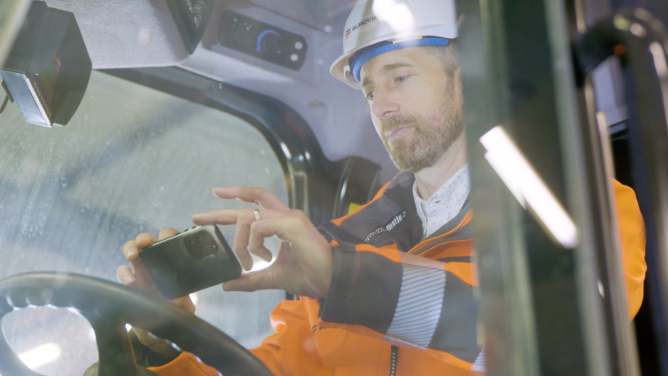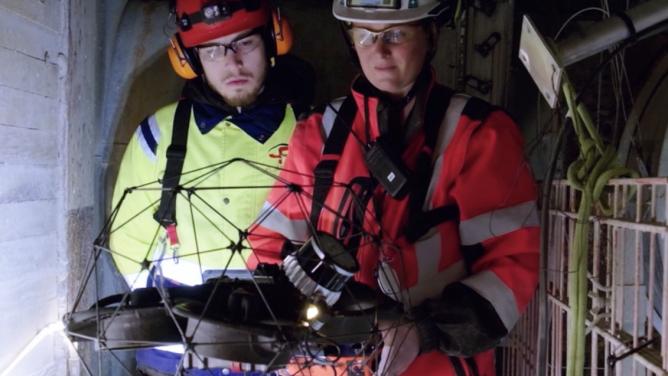
It appears that the latest humanoid robots are not quite the champions of DIY (video). However, when it comes to automation in the workplace, reports are coming in thick and fast. While they’re not necessarily saying the same thing, they do all agree that there’s progress happening in robotics. The latest study to date comes from the World Economic Forum, which couples its prediction (52% of professional services will be performed by robots in 2025, compared to 29% already today) with a sort of optimism: this robotic revolution will actually create an increase in jobs overall. All that remains is a gigantic effort in dealing with training people new skills (journalists invited by Amazon to their ultra-automated warehouses noted that “the humans were doing jobs that wouldn’t have existed before the robots were built”), workplace organization and also onsite security.
A supplementary “workforce”?
The transformations expected in the construction industry are, however, a little less aggressive than those in the automobile and logistics industries and in the manufacturing of mainstream tech products. Here, automation isn’t a secondary competitive advantage, but it’s already seen as “absolutely necessary”. The impact in terms of jobs isn’t neutral, but employers see it as being less invasive than in other industries: 33% of businesses in the sector questioned by the World Economic Forum (compared with 50% in all industries combined) anticipate job losses due to automation, but at the same time, 28% also predict that robots will entail more job creation. On the other hand, the general gains in skill set development should be more obvious than elsewhere, as numerous workers are being forced to carry out more increasingly specialized tasks. Indeed, assembly line workers and mechanics are amongst those jobs the most at risk of automation by 2022, while at the same time, software developers and specialists in the automation process and human-robot interaction are those in increasing demand.
In addition to the processes of designing and analyzing buildings, which have been affected by digitalization and even automation, the construction phases themselves tend to include automated tasks. Robots have already made an entrance on construction sites, however they’re working in environments that aren’t conductive to 100% autonomy, thus requiring operators to remain by their side, which is a feature specific to the construction industry. They’ve been around for demolition tasks for a long time, and now we’re seeing them being used for construction site layout and modeling tasks, like such “fully robotized stations”. According to ZeroLabor, a manufacturer of mass-produced robotized systems which produce structures (walls, flooring, roofing, produced separately or within existing assembly lines), there are two reasons which explain constructors’ still-nascent appeal for automated solutions: there’s the constant search for productivity gains, but also the search for answers as to the “shortage of skilled-labor”, which over the past few years has reached a “crisis level”, especially in the United States.
Indeed for several years now, American employers have noted serious difficulties in recruiting certain positions on construction sites, and thus view robotics as a complementary “workforce”. They especially see themselves increasingly resorting to small automated construction vehicles for excavation tasks and loading materials, just like how the asbestos removal industry has implemented the robot caterpillar from Neom (VINCI Construction France).
Robot-worker collaboration is a new “way of life”
The arrival of robotics in the construction industry turns out to be a case of new win-win synergies rather than a zero-sum game. Its face could be that of a “semi-automated mason”, who may be two or three times more productive than a laborer laying bricks, but must work alongside other laborers for things that only humans can do, so that they can verify the quality and own the finished product.
Automation is synonymous with removing difficult, tiring, dangerous or repetitive tasks which can be typical to construction site work. In that sense, they “augment” the worker’s job by assisting them, thus making it a collaborative robot, or cobotics. The aim of increasing global efficiency is thus within reach, with robots designed to lift heavy weights rapidly and repeatedly, night and day, leaving workers more focused on tasks that only humans can carry out in a satisfactory manner.
All that remains is to create work processes which ensures such efficiency: robotics makes the technology used in the place of work more complex and diversified, and can lead to an urgent “organizational patch-up job” situation that’s not so favorable. “Businesses need to take their time, invest properly and truly get to grips with these technologies as a new way of life, because they’re going to change our industry,” warns the director of the company Construction Robotics.


